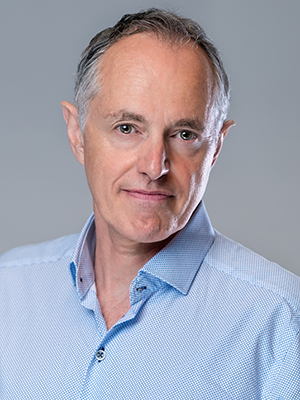
Scientists had previously noted that the presence of a large protein called MondoA was associated with worse outcomes in several pediatric cancers, but they didn’t understand why.
That changed after Dr. Poul Sorensen, a distinguished scientist with BC Cancer and an investigator with the Michael Cuccione Childhood Cancer Research Program at BC Children’s Hospital, won an August-Wilhelm Scheer guest professorship award to work at the Technical University of Munich for a year with Dr. Stefan Burdach, chair of Pediatric Oncology/Hematology. Dr. Sorensen and the team in the Bavarian city joined forces to explore the role of MondoA in childhood malignant tumours.
“This is a really good example of cross-Atlantic collaboration in biomedical research,” said Sorensen, a professor in the faculty of medicine at the University of British Columbia.
“Sometimes, if you just go and work somewhere else, or someone comes and works with us in Vancouver, it leads to fresh ideas.”
In a new study published in Blood, a journal of the American Society of Hematology, the researchers found that the MondoA protein appears to promote an adaptive response to metabolic stress in leukemia cells. The presence of the protein allows leukemia cells to switch to an energy-saving mode when threatened by low levels of nutrients or oxygen, and then switch back to cell proliferation when conditions improve.
“Basically, MondoA makes the leukemia cells heartier,” said Dr. Sorensen, co-senior author of the study.
“How we should be thinking about tumour cells is that they switch between these different states, and the better able they are to make those switches, the heartier they are. If you can snip the wiring that allows for this type of switch, then you take away that adaptive response,” said Sorensen. “We’re already exploring the potential for targeting the MondoA protein as a childhood cancer treatment.”
For the study, the research team focused on the most common type of leukemia diagnosed in young children, acute lymphoblastic leukemia (ALL), focusing specifically on B-ALL, the most common subtype. Lymphoid leukemia develops from abnormal lymphoid cells and acute leukemia starts suddenly, developing within days or weeks. Despite major advances in treating ALL, it remains a leading cause of cancer death in children, and current treatments result in long-term toxicity. Survivors face a reduced life expectancy and are more likely to suffer from secondary cancers or cardiac-related events.
Investigators used clustered regularly interspaced short palindromic repeats (CRISPR)/Cas9 gene editing and RNA interference approaches to inactivate MondoA in leukemia cells. They observed that MondoA depletion reduces the transformational capacity of B-ALL cells because they could no longer adapt to low nutrient levels or loss of oxygen, and this dramatically inhibited malignant potential in mouse models.
MondoA plays an important role in many other cellular systems, including metabolism and obesity. In fact, the research team is repurposing a new designer anti-obesity drug that has been developed to target MondoA in the context of obesity and metabolic diseases.
Treatment for B-ALL depends on its stage but can include chemotherapy and stem cell transplantation.
“The outcomes are good if they go into remission with the first set of therapies, but if they don’t, or they recur, then the outcome is not very good at all,” Sorensen said.
B-ALL returns in 15-20 per cent of children who are treated for the disease. “Recurrent or metastatic disease is still extremely hard to treat,” Sorensen said. “If you try to treat aggressively, then that’ll have side effects in the kids because they’re growing physically, emotionally and psychologically. The side effects of these really aggressive therapies can be devastating.”
That’s why he’s so enthusiastic about the therapeutic potential of focusing on MondoA.
“I really think targeting MondoA should be explored in recurrent leukemias,” Dr. Sorensen said.
“You’re targeting the molecular differences in tumour and normal cells, as opposed to broad therapy that has the potential to indiscriminately target normal dividing cells, so you have the opportunity to dramatically reduce toxicity in patients.”
In addition to examining how the anti-obesity drugs affects the way MondoA functions in B-ALL leukemia cells, the team is exploring this treatment with other tumour types, such as sarcomas, neuroblastoma and medulloblastoma – the most common type of brain cancer in kids.
“That’s something we’re super excited about, namely to determine how general the observed mechanism is."




